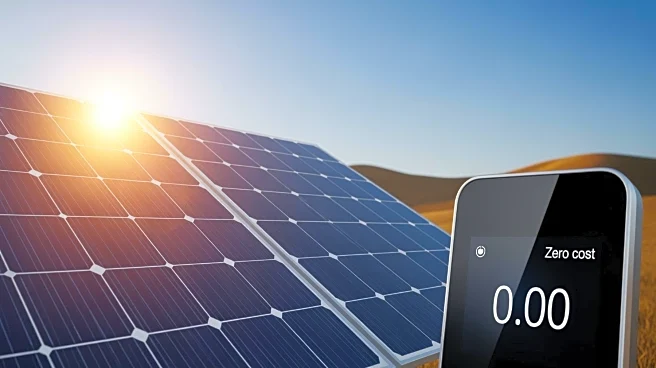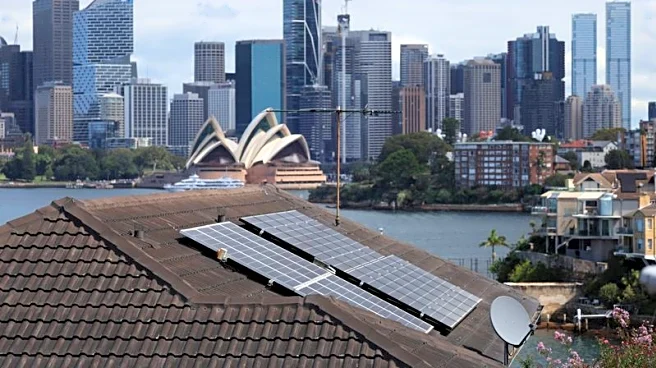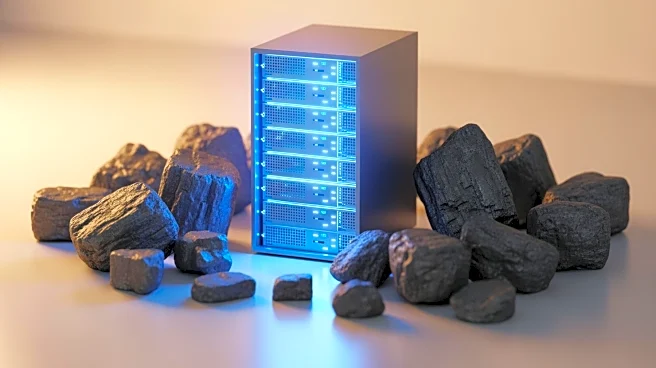What's Happening?
The Australian government has announced a new initiative that will provide free electricity for up to three hours per day to customers in three states starting in July 2026. This initiative is a result
of the rapid expansion of solar power in the country, where rooftop solar installations have become significantly cheaper compared to the U.S. The plan, known as the Solar Sharer, will initially be available in New South Wales, South Australia, and southeastern Queensland. It aims to encourage energy use during peak solar production hours, thereby reducing reliance on coal and gas during nighttime. The initiative is part of a broader effort to leverage the country's abundant solar resources to lower energy costs and promote renewable energy use.
Why It's Important?
This development is significant as it highlights the potential for renewable energy to reduce electricity costs and dependency on fossil fuels. By offering free electricity during peak solar production hours, the initiative could lead to a shift in energy consumption patterns, encouraging more sustainable practices. This could also serve as a model for other countries looking to maximize the benefits of renewable energy. The plan may alleviate some of the financial burdens on households, particularly those without the means to install their own solar panels. Additionally, it underscores the importance of government policy in facilitating the transition to renewable energy sources.
What's Next?
The success of this initiative could prompt further expansion to other regions and potentially inspire similar programs globally. As more households opt into the Solar Sharer plan, there may be increased demand for smart meters and appliances that can optimize energy use during free electricity hours. The initiative could also lead to a reduction in the need for grid-scale batteries, as more energy is consumed during production peaks. Stakeholders, including energy providers and policymakers, will likely monitor the program's impact on energy consumption and grid stability.












